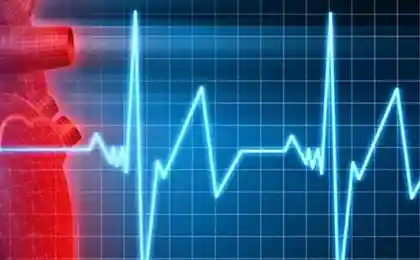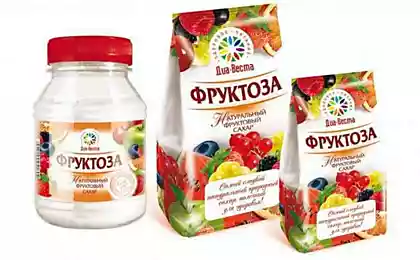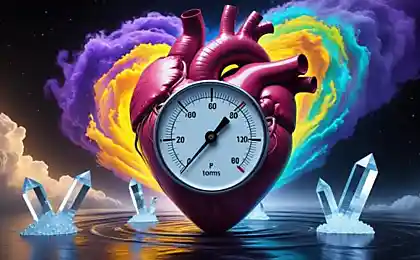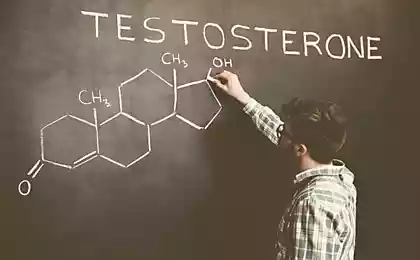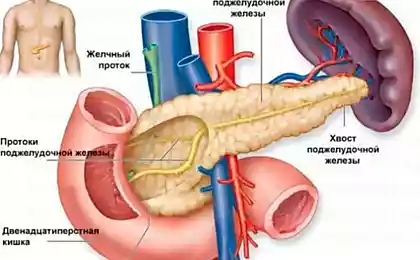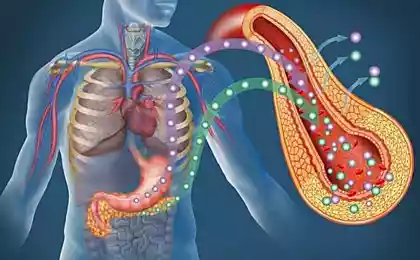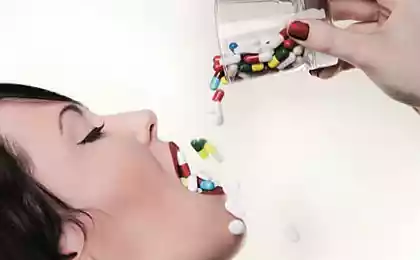665
The main triggers of hypertension: 5 strategies to lower blood pressure
What causes hypertension?One of the main causes of high blood pressure is that the body produces too much insulin and leptin in response to the diet with lots of carbohydrates and processed foods.
When the level of insulin and leptin, and increases blood pressure. In addition, hypertension is significantly associated elevated levels of uric acid, therefore any program of treatment of high blood pressure needs to help normalize as insulin sensitivity, and uric acid.
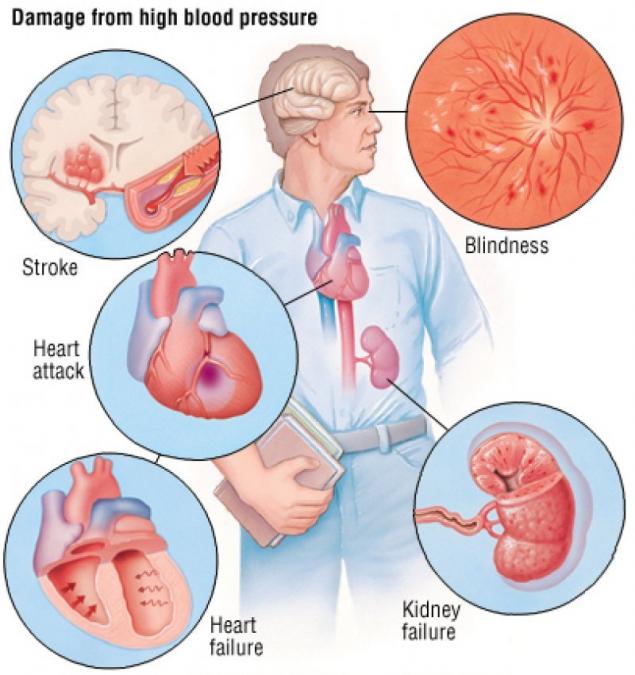
It turns out, by eliminating excess sugar/fructose from your diet, can in one fell swoop to solve all three problems. Other treatment strategies, which I will discuss below, is also aimed at achieving this effect. But first, let's see what is high blood pressure, how to assess the risk of hypertension associated with obesity, and why medication is not the best way.
What is your pressure?The measure of blood pressure consists of two numbers. The top (first) number is the systolic blood pressure. The bottom (second) number is the diastolic pressure.
For example: 120/80 = 120 — is the systolic blood pressure and 80 is diastolic blood pressure.
Systolic pressure is the highest in the arteries. It occurs when at the beginning of the cardiac cycle the ventricles are reduced. Diastolic pressure means the low blood pressure — it occurs in the resting phase of the cardiac cycle.
Ideally, blood pressure should be about 120/80 without medication. If you are over 60 years of age, systolic blood pressure is the most important risk factor for cardiovascular diseases. If you are younger than 60 years and you have no other major risk factors for cardiovascular diseases, the more important factor is the diastolic pressure.
Blood pressure classification Systolic blood pressure (mm Hg. Hg) Diastolic pressure (mm Hg. Hg) Normal <120 <80 Pre-hypertension 120-139 80-89 Hypertension 1 degree 140-159 90-99 Hypertension 2 degree ≥160 ≥100 Primary and secondary hypertensionthere are also primary and secondary hypertension. The first applies to about 90-95 percent of people with high blood pressure, and although conventional medicine claims that the cause is idiopathic or unknown,primary hypertension (or primary hypertension), is likely to be associated with insulin resistance/leptin.
Secondary hypertension applies to the remaining 5-10 percent, which is high blood pressure caused by chronic liver disease. Revised recommendations for blood pressure issued at the end of last year, emphasize when and how doctors should treat high blood pressure. Patients at the stage of pre-hypertension should not be treated with drugs that reduce blood pressure; rather, they should be counseled to make appropriate changes to their lifestyle to cope with their condition.
If you are between 18 to 59 years and you have no serious disease, or if you are 60 or over and you have diabetes and/or chronic kidney disease, conventional medicine will prescribe a treatment with medications, if your blood pressure is 140/90 or higher than these figures. For people over 60 years, but who do not have diabetes or chronic kidney disease, experts suggest to postpone the treatment with medications as long as the pressure does not exceed 150/90.
How to avoid false diagnosis of hypertensionto avoid false diagnosis of hypertension, remember that blood pressure can change every day and even every hour, so take your time to worry, if at some point you will have high rates. Serious health problems can say when arterial pressure is increased continuously or chronically. The reliability of the blood pressure can also be affected by these variables:
Indeed, certain types of figures increase the risk of chronic diseases, and the extra inches around the waist, as it has been proven to increase the risk to the health of the cardiovascular system. In addition, the waist size is a powerful indicator of insulin sensitivity, as studies clearly show that waist measurement is one of the most effective ways to predict the risk of diabetes.
To calculate the ratio of the circumferences of the waist and hips, measure the circumference of your hips at their widest part — on the buttocks, and the waist — at the smallest natural circumference, just above the navel. Now divide the waist measurement to the hip measurement and you will get a ratio.
Arterial stiffness is associated with high blood pressure and vitamin D deficiencyAccording to Norwegian researchers, arterial stiffness (atherosclerosis) is the leading factor in high blood pressure and represents "a major therapeutic target" of treatment. They found that when the blood passes from the heart through the vessels, cells in the aortic wall — baroreceptors — sense the load and signal the nervous system about the need to raise or lower the pressure. But the stiffer the artery is, the less sensitive the baroreceptors and the less effective they send the appropriate signals.
As a result, the body does not receive the signal to reduce the pressure of blood flowing through the arteries. "This is contrary to existing models, which typically explain high blood pressure from the point of view of the violation of kidney function," says Klas Pettersen, a researcher at the Norwegian University of life Sciences and first author of the study".
Take vitamin D to relax the arteries and to normalize blood pressurevitamin D Deficiency and consumption of TRANS fats can cause the arteries become more rigid. Vitamin D deficiency appears to be associated with both arterial stiffness and hypertension. In every cell in your body has a DNA library that contains information needed to answer almost all the stimuli with which it may encounter, and the master key to enter this library is activated vitamin D. this is why vitamin D functions in so many different tissues, and affects such a large number of different diseases, one of which is heart disease.
According to the researchers of the Institute of forecasting of health — the joint brainchild of the Institute Emory and Georgia Institute of Technology, even if you're considered generally "healthy," anyway, when vitamin D deficiency arteries are likely stiffer than they should be and the blood pressure may rise because the blood vessels do not relax. The results of this study, vitamin D levels below 20 grams per milliliter (ng/ml) is recognized by the state of deficiency that increase the risk of hypertension. Vitamin D levels below 30 ng/ml considered insufficient.
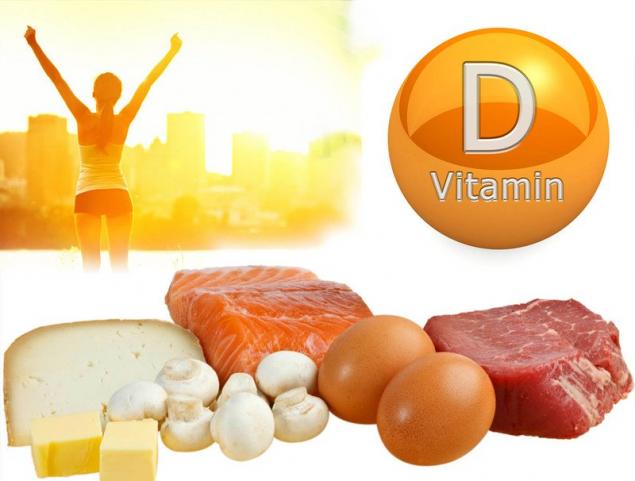
Substitute the skin to the sun is going to affect blood pressure through various mechanisms, including the following:
As a General recommendation, according to a study conducted by Grassroots Health, adults need about 8,000 IU per day to the level of this vitamin in the serum was 40 ng/ml. Keep in mind that if you decide to take oral vitamin D3, you will need to increase the intake of vitamin K2, as these two nutrients work in tandem.
Together they create and activate matrix Gla-protein (MGB), which United around the elastic fibers of the inner lining of the arteries, protecting it from the formation of crystals of calcium.
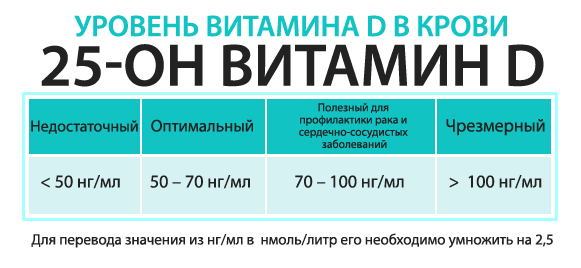
The five main strategies of lifestyle for lower blood pressurewell, time to move on to the details — how to normalize blood pressure. As mentioned above, high blood pressure is associated usually with the insulin resistance that occurs due to the fact that in the diet too much sugar. Increasing the level of insulin increases and blood pressure.
Insulin stores magnesium, but if the sensitivity of the insulin receptors are blunted and cells become resistant to insulin, magnesium is not saved and it exits the body in urine. Magnesium stored in your cells relaxes muscles. If the magnesium level is too low, blood vessels contract, not relax, and this reduction increases blood pressure.
TRANS fats is another food factor. As stated, they cause atherosclerosis (hardening of the arteries), which, according to the researchers, is another goal of treatment for hypertension. So try to avoid all TRANS fats or hydrogenated fats which have been processed to prolong their shelf life. These include margarine, vegetable oil and different "almost like butter" spreads.
If you have high blood pressure, need to restore your insulin sensitivity and leptin — to achieve this will help the following five strategies:
Avocadobutter raw organic milk from pastured cowsRaw milk productsOrganic the yolks of eggs poultry free rangeCoconuts and coconut oilorganic Walnut oil to be produced without heatingthe Raw nuts, such as pecans and macadamia, which are little protein and lots of healthy fatspastured Meat animals or poultry
Conducted in 2010 a study found that those who consumed 74 grams or more of fructose per day (the equivalent of about 2.5 sugary drinks), 77 percent increased risk of blood pressure level of 160/100 mm Hg.St. (Stage 2 hypertension). The consumption of 74 grams or more of fructose per day also increases the risk of high blood pressure 135/85 by 26 percent, and indicators of 140/90 by 30 percent.
A recent analysis of existing studies, which reported the magazine TimeMagazine under the "speaking" header "Sugar that goes directly into the pressure"showed that because of the sweet pressure just takes off, regardless of your weight and eating too much sugar usually leads to weight gain, which also contributes to hypertension (as discussed above).
Fructose also increases uric acid levels, which increases blood pressure by inhibiting the nitric oxide in the blood vessels. (Uric acid is a byproduct of fructose metabolism. It is formed usually within a few minutes after the absorption of fructose.)
Nitric oxide helps blood vessels retain elasticity, therefore, the suppression of nitric oxide leads to increased blood pressure. High uric acid level has long been linked to gout, but recent studies show that it is associated with much more serious problems in health, including hypertension, cardiovascular disease, diabetes of the 2nd type, the disease of fatty liver and kidney disease. published
Dr. Joseph Mercola
P. S. And remember, only by changing their consumption - together we change the world! ©
Source: russian.mercola.com/sites/articles/archive/2017/03/29/%D0%BF%D1%80%D0%BE%D1%84%D0%B8%D0%BB%D0%B0%D0%BA%D1%82%D0%B8%D0%BA%D0%B0-%D0%BB%D0%B5%D1%87%D0%B5%D0%BD%D0%B8%D0%B5-%D0%B3%D0%B8%D0%BF%D0%B5%D1%80%D1%82%D0%BE%D0%BD%D0%B8%D0%B8.aspx
When the level of insulin and leptin, and increases blood pressure. In addition, hypertension is significantly associated elevated levels of uric acid, therefore any program of treatment of high blood pressure needs to help normalize as insulin sensitivity, and uric acid.

It turns out, by eliminating excess sugar/fructose from your diet, can in one fell swoop to solve all three problems. Other treatment strategies, which I will discuss below, is also aimed at achieving this effect. But first, let's see what is high blood pressure, how to assess the risk of hypertension associated with obesity, and why medication is not the best way.
What is your pressure?The measure of blood pressure consists of two numbers. The top (first) number is the systolic blood pressure. The bottom (second) number is the diastolic pressure.
For example: 120/80 = 120 — is the systolic blood pressure and 80 is diastolic blood pressure.
Systolic pressure is the highest in the arteries. It occurs when at the beginning of the cardiac cycle the ventricles are reduced. Diastolic pressure means the low blood pressure — it occurs in the resting phase of the cardiac cycle.
Ideally, blood pressure should be about 120/80 without medication. If you are over 60 years of age, systolic blood pressure is the most important risk factor for cardiovascular diseases. If you are younger than 60 years and you have no other major risk factors for cardiovascular diseases, the more important factor is the diastolic pressure.
Blood pressure classification Systolic blood pressure (mm Hg. Hg) Diastolic pressure (mm Hg. Hg) Normal <120 <80 Pre-hypertension 120-139 80-89 Hypertension 1 degree 140-159 90-99 Hypertension 2 degree ≥160 ≥100 Primary and secondary hypertensionthere are also primary and secondary hypertension. The first applies to about 90-95 percent of people with high blood pressure, and although conventional medicine claims that the cause is idiopathic or unknown,primary hypertension (or primary hypertension), is likely to be associated with insulin resistance/leptin.
Secondary hypertension applies to the remaining 5-10 percent, which is high blood pressure caused by chronic liver disease. Revised recommendations for blood pressure issued at the end of last year, emphasize when and how doctors should treat high blood pressure. Patients at the stage of pre-hypertension should not be treated with drugs that reduce blood pressure; rather, they should be counseled to make appropriate changes to their lifestyle to cope with their condition.
If you are between 18 to 59 years and you have no serious disease, or if you are 60 or over and you have diabetes and/or chronic kidney disease, conventional medicine will prescribe a treatment with medications, if your blood pressure is 140/90 or higher than these figures. For people over 60 years, but who do not have diabetes or chronic kidney disease, experts suggest to postpone the treatment with medications as long as the pressure does not exceed 150/90.
How to avoid false diagnosis of hypertensionto avoid false diagnosis of hypertension, remember that blood pressure can change every day and even every hour, so take your time to worry, if at some point you will have high rates. Serious health problems can say when arterial pressure is increased continuously or chronically. The reliability of the blood pressure can also be affected by these variables:
- The wrong size cuff: If you are overweight, the blood pressure measurement device with the "middle" cuff size may result in false high levels.
- Incorrect hand position: If you measure your blood pressure in a position where the arm is parallel to the body, the figures can be 10 percent higher than it actually is. Blood pressure should always be measured in position when the arm is at a right angle to the body.
- Nervousness: "white coat Hypertension" — this term refers to a increase in blood pressure due to stress or fear associated with doctors and hospitals.
Indeed, certain types of figures increase the risk of chronic diseases, and the extra inches around the waist, as it has been proven to increase the risk to the health of the cardiovascular system. In addition, the waist size is a powerful indicator of insulin sensitivity, as studies clearly show that waist measurement is one of the most effective ways to predict the risk of diabetes.
To calculate the ratio of the circumferences of the waist and hips, measure the circumference of your hips at their widest part — on the buttocks, and the waist — at the smallest natural circumference, just above the navel. Now divide the waist measurement to the hip measurement and you will get a ratio.
Arterial stiffness is associated with high blood pressure and vitamin D deficiencyAccording to Norwegian researchers, arterial stiffness (atherosclerosis) is the leading factor in high blood pressure and represents "a major therapeutic target" of treatment. They found that when the blood passes from the heart through the vessels, cells in the aortic wall — baroreceptors — sense the load and signal the nervous system about the need to raise or lower the pressure. But the stiffer the artery is, the less sensitive the baroreceptors and the less effective they send the appropriate signals.
As a result, the body does not receive the signal to reduce the pressure of blood flowing through the arteries. "This is contrary to existing models, which typically explain high blood pressure from the point of view of the violation of kidney function," says Klas Pettersen, a researcher at the Norwegian University of life Sciences and first author of the study".
Take vitamin D to relax the arteries and to normalize blood pressurevitamin D Deficiency and consumption of TRANS fats can cause the arteries become more rigid. Vitamin D deficiency appears to be associated with both arterial stiffness and hypertension. In every cell in your body has a DNA library that contains information needed to answer almost all the stimuli with which it may encounter, and the master key to enter this library is activated vitamin D. this is why vitamin D functions in so many different tissues, and affects such a large number of different diseases, one of which is heart disease.
According to the researchers of the Institute of forecasting of health — the joint brainchild of the Institute Emory and Georgia Institute of Technology, even if you're considered generally "healthy," anyway, when vitamin D deficiency arteries are likely stiffer than they should be and the blood pressure may rise because the blood vessels do not relax. The results of this study, vitamin D levels below 20 grams per milliliter (ng/ml) is recognized by the state of deficiency that increase the risk of hypertension. Vitamin D levels below 30 ng/ml considered insufficient.

Substitute the skin to the sun is going to affect blood pressure through various mechanisms, including the following:
- Sun exposure causes the body to produce vitamin D. Lack of sunlight reduces vitamin D stores and increases parathyroid hormone production which increases blood pressure.
- Vitamin D deficiency has also been associated with insulin resistance and metabolic syndrome — a group of health problems that includes insulin resistance, high cholesterol and triglycerides, obesity, and high blood pressure.
- Sun exposure increases the level of nitric oxide in the skin. It dilates blood vessels, thereby reducing blood pressure.
- Vitamin D is a negative inhibitor of the renin-angiotensin system (RAS), which regulates blood pressure.
- In addition, exposure to ultraviolet radiation is believed to cause the release of endorphins — chemicals in the brain that cause feelings of euphoria and analgesia. Endorphins is a natural way to ease stress and stress management is an important factor in solving the problem of hypertension.
As a General recommendation, according to a study conducted by Grassroots Health, adults need about 8,000 IU per day to the level of this vitamin in the serum was 40 ng/ml. Keep in mind that if you decide to take oral vitamin D3, you will need to increase the intake of vitamin K2, as these two nutrients work in tandem.
Together they create and activate matrix Gla-protein (MGB), which United around the elastic fibers of the inner lining of the arteries, protecting it from the formation of crystals of calcium.

The five main strategies of lifestyle for lower blood pressurewell, time to move on to the details — how to normalize blood pressure. As mentioned above, high blood pressure is associated usually with the insulin resistance that occurs due to the fact that in the diet too much sugar. Increasing the level of insulin increases and blood pressure.
Insulin stores magnesium, but if the sensitivity of the insulin receptors are blunted and cells become resistant to insulin, magnesium is not saved and it exits the body in urine. Magnesium stored in your cells relaxes muscles. If the magnesium level is too low, blood vessels contract, not relax, and this reduction increases blood pressure.
TRANS fats is another food factor. As stated, they cause atherosclerosis (hardening of the arteries), which, according to the researchers, is another goal of treatment for hypertension. So try to avoid all TRANS fats or hydrogenated fats which have been processed to prolong their shelf life. These include margarine, vegetable oil and different "almost like butter" spreads.
If you have high blood pressure, need to restore your insulin sensitivity and leptin — to achieve this will help the following five strategies:
- Avoid processed food (due to high content of sugar/fructose, grains, TRANS fats and other damaged fats)
- Alternating fasting is one of the most effective known ways to improve the sensitivity to insulin/leptin. It's not a diet in the usual sense of the word, but rather a way to plan your meals so that the energy spent in the most efficient manner.
- Let your diet consists mainly of whole, ideally organic foods
- Replacement of carbohydrates beneficial fats.
Avocadobutter raw organic milk from pastured cowsRaw milk productsOrganic the yolks of eggs poultry free rangeCoconuts and coconut oilorganic Walnut oil to be produced without heatingthe Raw nuts, such as pecans and macadamia, which are little protein and lots of healthy fatspastured Meat animals or poultry
- Regular physical exercises. By the way, I recommend you try to breathe through the nose, performing exercises, because the mouth breathing during exercise may increase your heart rate and blood pressure that sometimes leads to fatigue and dizziness.
Conducted in 2010 a study found that those who consumed 74 grams or more of fructose per day (the equivalent of about 2.5 sugary drinks), 77 percent increased risk of blood pressure level of 160/100 mm Hg.St. (Stage 2 hypertension). The consumption of 74 grams or more of fructose per day also increases the risk of high blood pressure 135/85 by 26 percent, and indicators of 140/90 by 30 percent.
A recent analysis of existing studies, which reported the magazine TimeMagazine under the "speaking" header "Sugar that goes directly into the pressure"showed that because of the sweet pressure just takes off, regardless of your weight and eating too much sugar usually leads to weight gain, which also contributes to hypertension (as discussed above).
Fructose also increases uric acid levels, which increases blood pressure by inhibiting the nitric oxide in the blood vessels. (Uric acid is a byproduct of fructose metabolism. It is formed usually within a few minutes after the absorption of fructose.)
Nitric oxide helps blood vessels retain elasticity, therefore, the suppression of nitric oxide leads to increased blood pressure. High uric acid level has long been linked to gout, but recent studies show that it is associated with much more serious problems in health, including hypertension, cardiovascular disease, diabetes of the 2nd type, the disease of fatty liver and kidney disease. published
Dr. Joseph Mercola
P. S. And remember, only by changing their consumption - together we change the world! ©
Source: russian.mercola.com/sites/articles/archive/2017/03/29/%D0%BF%D1%80%D0%BE%D1%84%D0%B8%D0%BB%D0%B0%D0%BA%D1%82%D0%B8%D0%BA%D0%B0-%D0%BB%D0%B5%D1%87%D0%B5%D0%BD%D0%B8%D0%B5-%D0%B3%D0%B8%D0%BF%D0%B5%D1%80%D1%82%D0%BE%D0%BD%D0%B8%D0%B8.aspx

